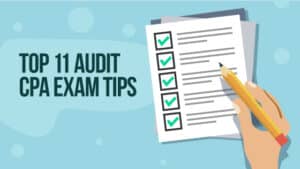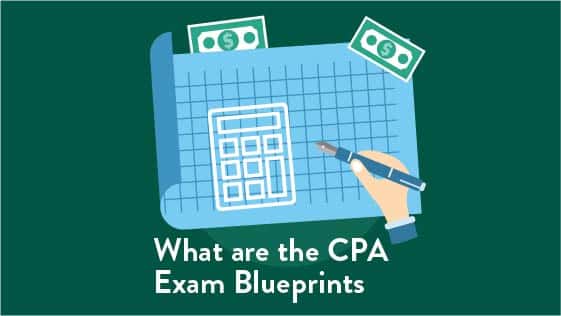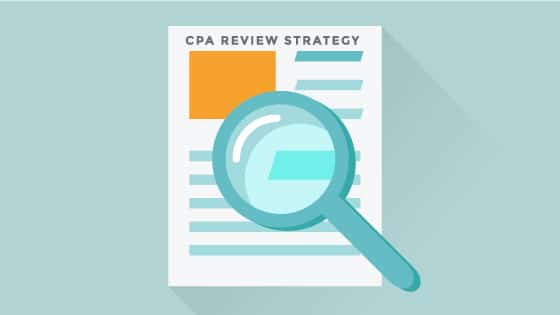 Auditing concepts can be difficult to understand, because an audit requires a different set of skills than posting accounting transactions or generating financial statements. To succeed on the Audit CPA exam (AUD) you need to put yourself in the shoes of an auditor, and understand the tests performed to issue an audit opinion.
Auditing concepts can be difficult to understand, because an audit requires a different set of skills than posting accounting transactions or generating financial statements. To succeed on the Audit CPA exam (AUD) you need to put yourself in the shoes of an auditor, and understand the tests performed to issue an audit opinion.
Use these CPA Audit exam tips to better understand how to navigate the most difficult questions and topics and pass your upcoming exam!
See the Top CPA Review Courses
- 1.Becker CPA Review Course ◄◄ Endorsed by Big 4 Accounting Firms + Save $1,331
- 2.Surgent CPA Prep Course ◄◄ Best Technology
- 3. Wiley CPA Review Course ◄◄ Best Instructor Support
Adjusting entry
The accrual method of accounting requires companies to use the matching principle, which matches revenue earned with the expenses incurred to produce the revenue. This rule applies, regardless of the timing of cash inflow and outflows.
Now:
When you see questions on adjusting entries, remember that the entry requires one balance sheet and one income statement account. Assume, for example, that you owe $3,000 in payroll for the last week of December, and that payroll will not be paid until January 5th of the following year. Here is the adjusting entry:
December 31st
Debit wage expense $3,000
Credit accrued wages payable $3,000
(To post wage expense on 12/31)
Wage expense is an income statement account, and accrued wages payable is a balance sheet account.
Here is the entry when the wages are paid on January 5th:
January 5th
Debit accrued wages payable $3,000
Credit cash $3,000
(To pay wages on 1/5)
Related Blog Posts & Resources
- Reduce Your CPA Study Time by 116 Hours!
- Which CPA Exam Section Do I Take First?
- Deep Dive: 35 CPA Exam Statistics [Infographic]
- CPA Exam Final Review Strategy
Asset valuation
Most assets are valued at historical cost, or the purchase price of the asset. Accounting principles use historical cost, because the purchase price can be easily confirmed. Fair market value and other methods are not widely used to value assets.
Audit opinions and fraud
An audit opinion states whether or not the financial statements are free of material misstatement. Because an audit opinion does not state that the financial statements are free of all errors, the auditor can perform test work on a sample basis. CPAs use statistics to determine the required sample size, and the results of the sample can be applied to the entire population tested.
Here’s the deal:
Performing an audit may not uncover fraud, which is defined as willful intent to deceive. Fraud is particularly difficult to uncover if two or more employees collude and work together to avoid internal controls.
If a business suspects that a fraud has occurred, the firm may engage a CPA to test every transaction in a particular account, in order to uncover fraud.
Confirmations
Every AUD exam includes questions regarding confirmations, and confirming information with a third party is considered more reliable the documentation provided by the client. An auditor may send confirmations to a bank to confirm an account balance, or send confirms to customers who have a large balance in accounts receivable.
Engagement letter
The engagement letter is a written agreement between the client and the CPA firm performing the audit, and some components of the engagement letter may be confusing to exam candidates.
An auditor uses judgment when selecting the audit procedures to be performed, and there is not one set of procedures performed for every audit. The client is responsible for implementing a system of internal controls, but the auditor must comment on any internal control weaknesses noted during the audit. Finally, the financial statements are the responsibility of management, and not the auditor.
Inventory count
The best way to confirm the existence of inventory is to perform a physical count, and most auditors require that a count take place before issuing an unqualified audit opinion.
If you haven’t participated in a physical inventory count, some aspects of the count may not be familiar to you. Here are some important components of an inventory count.
- Access during the count: No inventory can move in or out of the area where inventory is stored during the count. Inventory counts typically take place in a warehouse or retail shop, and the access to the location should be restricted during the count. This ensures that the count is performed using the most recent inventory listing from the accounting system.
- Obsolete inventory: Keep an eye out for obsolete inventory, or items that have been in inventory for a long time and are not selling. Obsolete inventory should be expensed by writing off the value of the inventory to cost of goods sold. Every inventory audit program requires the auditor to ask company managers about obsolete inventory.
- All tags collected: Every physical inventory item is tagged, and the tag lists the number of items, a product description, and the cost of the items tagged. If you’re a sporting goods retailer, for example, you might carry a box of 50 baseball gloves in inventory. All inventory tags generated from the accounting system must be placed on inventory and checked during an inventory count.
The AUD test includes several questions on inventory counts, so make sure that you study enough to understand these concepts well.
Materiality
Materiality is defined as a dollar amount that is large enough to be relevant to a financial statement reader, and there is not a set dollar amount that is considered material for every audit. The most important aspect of materiality is a misstatement of net income, because net income is a key metric used to value a company.
But here’s the kicker:
During audit planning, the audit staff will decide on a level of tolerable misstatement for each account balance. If, for example, the balance of accounts receivable is $2 million, the auditor may decide that any misstatement greater than $500 is material, which means an adjusted entry should be posted.
Sales and receivables
When an auditor performs an analytical review, the accountant compares balances in the financial statement to see if the relationships are reasonable. This analysis includes a review of trends from one year to the next. It’s very likely that you’ll see questions on the relationship between credit sales and receivables.
Credit sales are transactions that are not immediately paid in cash, and credit sales increase the accounts receivable balance. If your firm increases credit sales to new customers, you may find that new customers don’t pay as quickly as your existing client base.
What’s the bottom line?
If the accounts receivable balance grows at a faster percentage rate than credit sales, you may not be able to generate enough cash to operate each month. Growing credit sales by 10% will increase profits, but if the accounts receivable balance grows by 30%, if may create a cash shortage.
Sampling
Sampling is defined as applying an audit procedure to less than 100% of the items in a population. Keep in mind, however, that if exceptions are found as samples are tested, the auditor will expand the audit work by testing more items.
Assume, for example, that an auditor pulls a sample of client checks with a dollar amount of $1,000 or more. The client’s internal controls require two signatures on every check of $1,000 or more, and the auditor selects 50 checks for test work. If the auditor reviews checks that do not have two signatures, the sample size will be expanded. An auditor cannot rely on a sample that contains errors, because the same error rate may apply to the entire population.
Search for unrecorded liabilities
Auditors plan the engagement so that each account in the balance sheet is audited, and auditors are concerned about overstatement of asset accounts and liability accounts that are understated. This auditing concept is based on the balance sheet formula:
Assets – liabilities = equity
If an asset account, such as accounts receivable, increases, the firm’s equity balance also increases. On the other hand, a decrease in accounts payable (a liability account) also increases equity. The auditor’s goal is to audit each balance sheet account, to ensure that each account is materially correct.
The search of unrecorded liabilities is a procedure that confirms accounts payable. The auditor scans large checks written shortly after the fiscal year end and reviews the accounts payable detail. An auditor wants to see if the check is paying a liability that was posted to accounts payable.
Assume, for example, that a company has a December 31st fiscal year end. A $5,000 check paid to a vendor on January 10th was not listed on the December 31st accounts payable detail. If the client was incurred the expense before year-end, the $5,000 should be added to accounts payable by posted an adjusting entry.
Segregation of duties
Segregation of duties is a concept that applies to many audit procedures, and every accountant must understand this topic. This concept is the only way to reduce the risk of fraud, particularly fraud committed by workers within a business.
You might be wondering:
How can I protect my firm from fraud? To protect yourself, make sure that you understand the three types of duties that must be segregated among different employees:
- Physical custody of assets: One worker should have physical custody of assets, such as the checkbook, or the keys to the warehouse.
- Authorization: A second person, usually the owner, should have authority to move assets. An authorized check signer, for example, has the ability to move cash by signing a check.
- Recordkeeping: If possible, a third worker should be responsible for posting accounting activity. That would include the task of reconciling the bank accounts, for example.
Ideally, three separate people should handle these duties. The Audit CPA exam asks many questions on this topic, so make sure that you’re clear about segregation of duties.
Invest In Your Audit CPA Exam Prep
The AUD exam can be difficult, particularly if you haven’t worked as an auditor for a CPA firm. While this test does not have as many calculations as other sections of the CPA exam, you still need to invest a great deal of time to study for it.
Bryce Welker is a regular contributor to Forbes, Inc.com, YEC and Business Insider. After graduating from San Diego State University he went on to earn his Certified Public Accountant license and created CrushTheCPAexam.com to share his knowledge and experience to help other accountants become CPAs too. Bryce was named one of Accounting Today’s “Accountants To Watch” among other accolades. As Seen On Forbes











